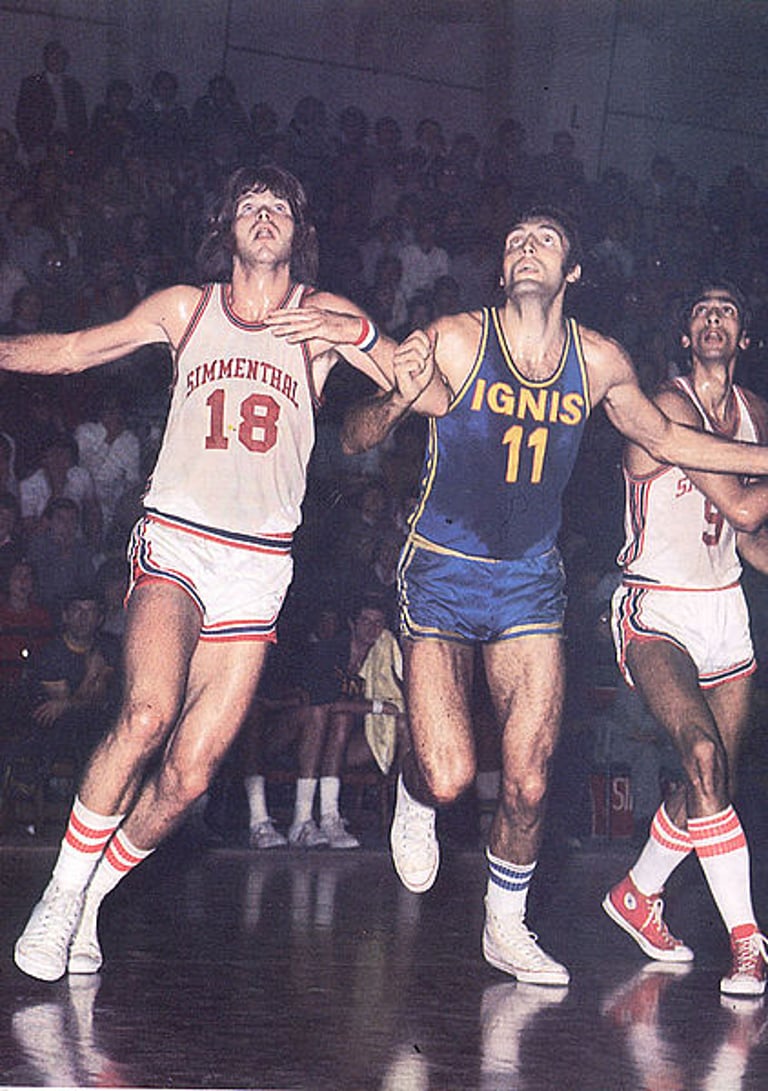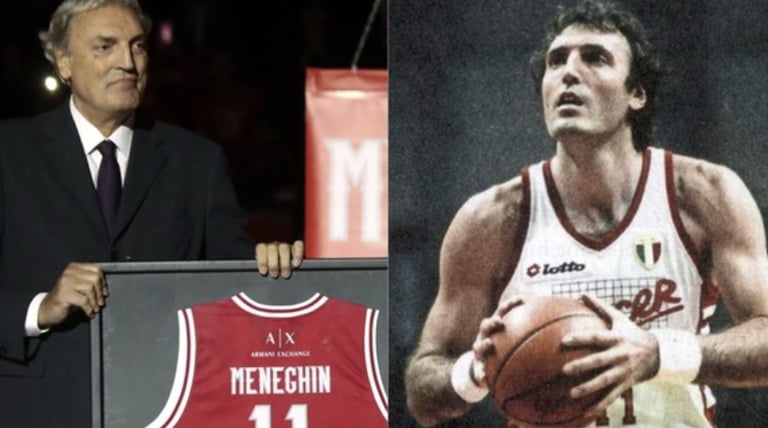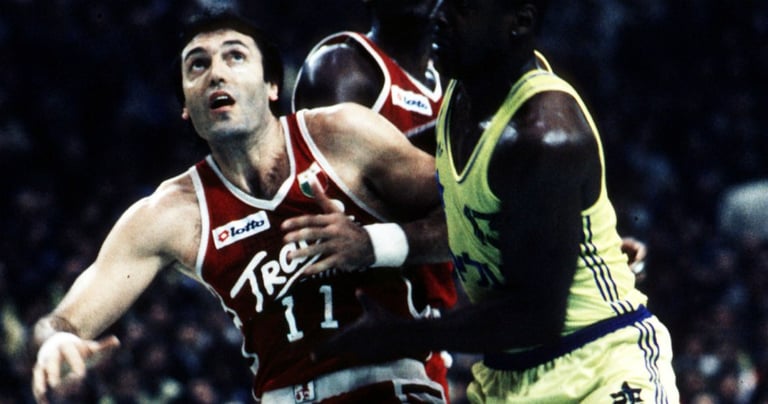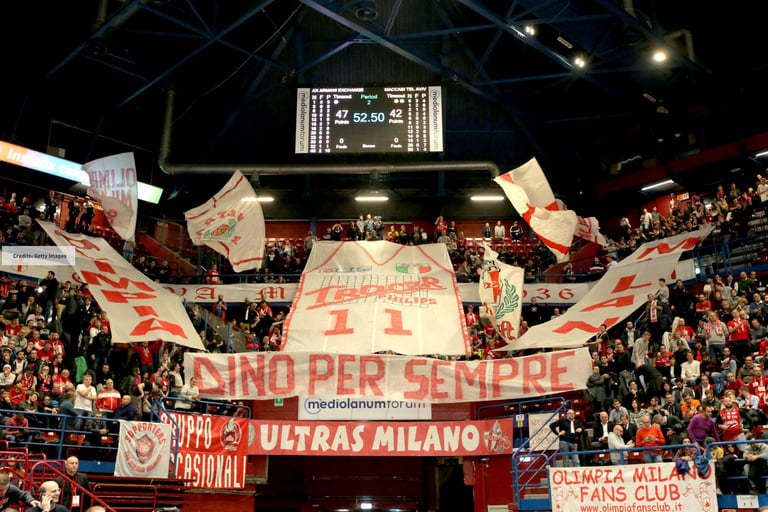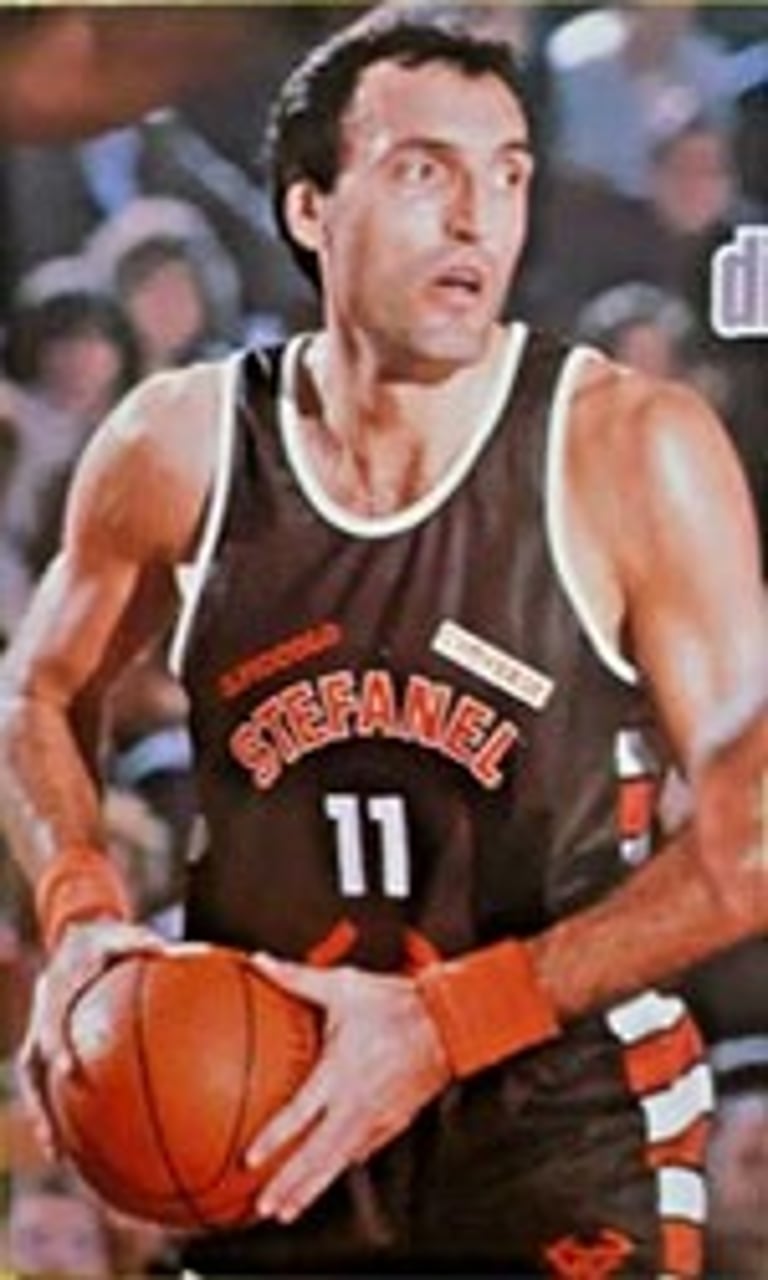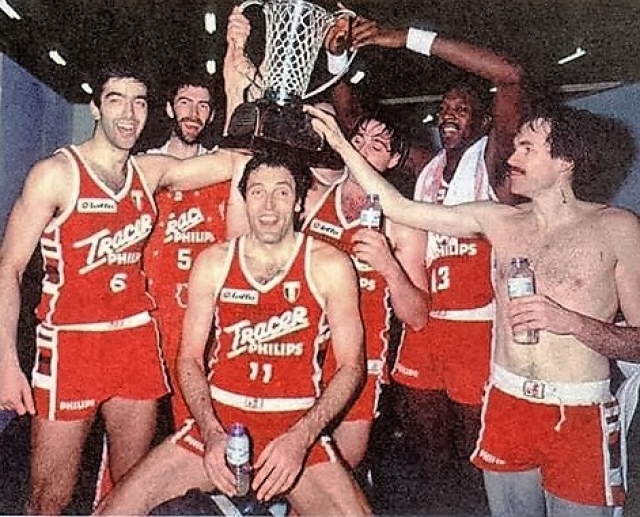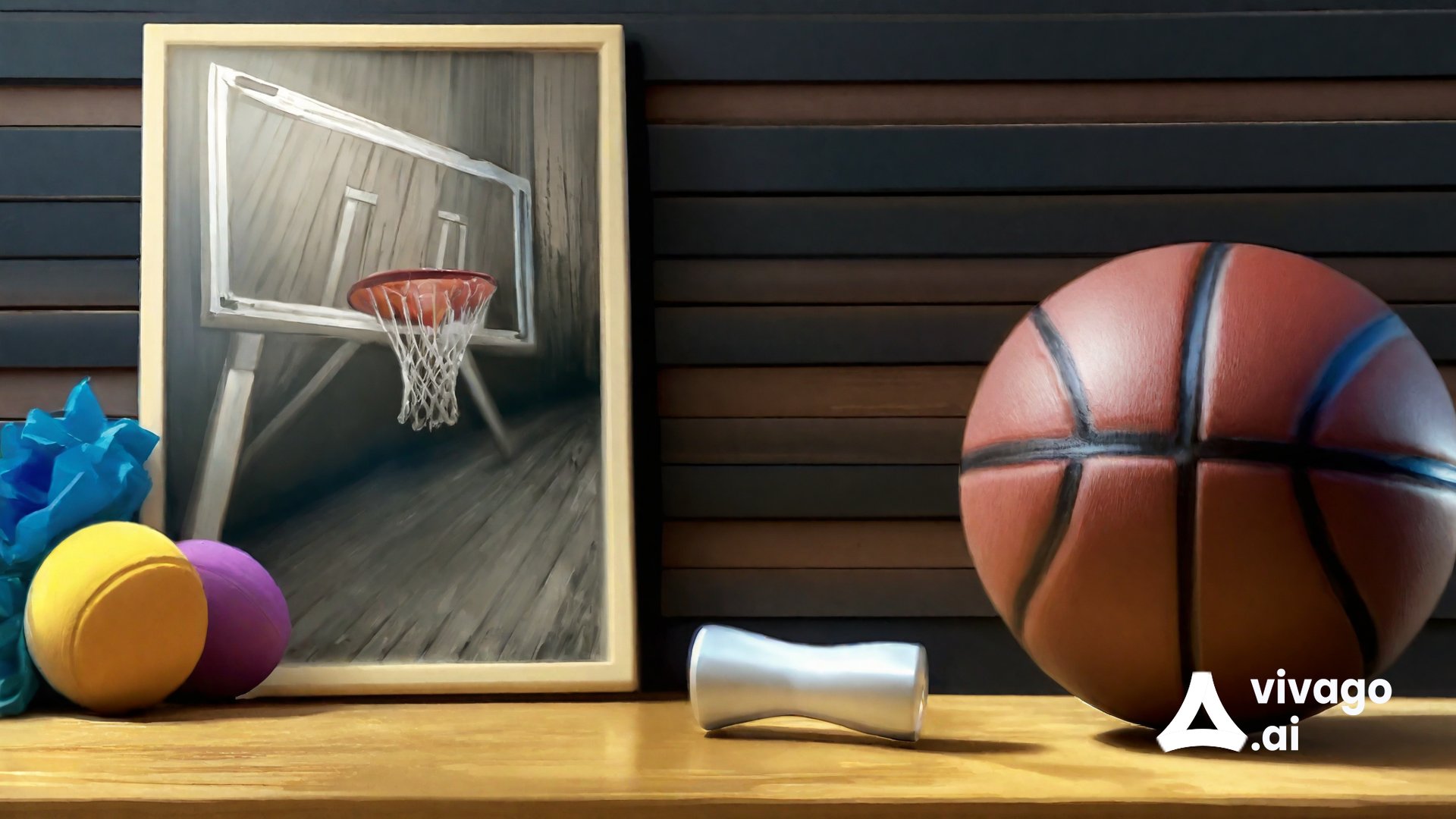
Dino Meneghin
"Dusty canvas shoes"
RETROPLAYERS
Antreas Tsemperlidis
6/10/202510 min read
He had already been standing in front of the wardrobe for quite some time, trying to choose a suit. He never liked extravagance and always felt a certain gloom when he had to dress formally. If it were up to him, he would have gone to this award ceremony -yet another one- without a tie and polished shoes but instead wearing the "work uniform" he had worn daily for thirty years. A jersey, shorts, and those canvas shoes that today's youth had turned into the latest fashion trend. He remembered that somewhere in the wardrobe was his first pair, tucked away, and with a quick search, he found them in a cardboard box. He sat on the edge of the bed and opened it. He looked at them with nostalgia. They were worn out from time and overuse. And then everything started to come back to him.
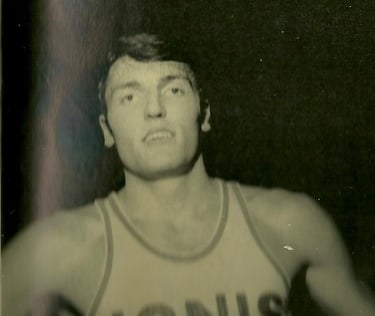

He remembered that day in 1963 when he was sitting in the stands at the Varese stadium, watching the training session of the youth team in which a friend of his participated. The man who approached him introduced himself as Niko Messina, the coach of the club's junior teams.
"Have you ever played basketball?" was the question he asked.
When the boy replied no, Messina could barely hide his surprise. He asked him to do a few exercises, and when he finished, he told him to come to the next day's practice with a pair of basketball shoes. The kid ran home excited and begged his mother to buy him the shoes. Mrs. Meneghin would grant the wish of her 13-year-old son, but first, she wanted an answer to her question:
"Dino, what is this thing called basketball?"
Three years later, on November 20, 1966, she would be clapping proudly at her son’s debut.
Dino Meneghin’s talent could not remain hidden, and soon Italy, along with the whole of Europe, would learn firsthand about his greatness. Vittorio Tracuzzi, the coach who gave him the chance as head of the men's team, was the one who established him in the starting lineup. The born champion Dino celebrated his first of many titles with Varese in 1967: the Cup Winners' Cup and soon after, the Italian Championship, together with Messina who had taken over from Tracuzzi.
The journey down the path of glory had begun for young Meneghin, and at the same time, so had the legend of Varese. The legendary squad of Dino, Ossola, Flaborea, "The Flying Mexican" Manuel Raga, and "The Blond Angel" Bob Morse would make history in European basketball, granting immortality to the heroes of an era. The vision of Giovanni Borghi would come to life, with Meneghin present and leading at every major moment for the pride of Lombardy.
AEK would temporarily halt their march in 1968 on the road to the Kallimarmaro epic story, and the 1960s would end for Meneghin with another championship in 1969.
The team was ready for the next step -European recognition- and the man to lead them, the "pack leader," was found in the figure of “Professor” Aca Nikolić. The Yugoslav coach immediately delivered what he had been hired for, and on April 9, 1970, in Sarajevo, the dynasty would begin. With 20 points from Dino, the Italians knocked out CSKA Moscow and lifted the European Champion’s Cup at the Skenderija dome. Dino would return to Yugoslavia later that year for the FIBA World Cup, where Italy placed fourth and he left a strong impression, especially during his duel with Krešimir Ćosić, a battle that initiated a mutual respect between the two. In the domestic league, Varese won its third consecutive title in 1971, although the Soviets of CSKA got their revenge in Antwerp that year in the European final. He was compensated with a bronze medal at the EuroBasket in Germany—his first with the national team. Dino was only 21 and had already won more titles than most players would in an entire career. And the trophy collection didn’t stop, with back-to-back domestic and European championships in 1972 and 1973. Meneghin and his teammates had firmly placed Varese on the map of European basketball powers and were determined to immortalize themselves and their team. They needed to do something unprecedented, something that had never happened before. Other teams had reached consecutive finals, but what Varese accomplished would go down in history. Throughout the entire 1970s, one spot in the European Champion’s Cup final was permanently reserved for Lombardy’s pride. Though in 1974, on the unsuitable court in Nantes, Real Madrid came out on top, in 1975 Varese restored order in Antwerp—even without Dino, who watched from the bench due to a broken hand.
After recovering, he strengthened "Squadra Azzurra" in the EuroBasket in Yugoslavia and climbed onto the podium once more. It was a year of both joy and sorrow for Meneghin: on September 25 of that year, Giovanni Borghi -the man he considered a second father- passed away, leaving a great void in the city’s athletic and social life. The following year, Varese dedicated the European Cup to their late visionary, and Dino delivered one of the best performances of his career in the Geneva final with 23 points and 11 rebounds, dominating both ends of the court. He had also hoped to dedicate an Olympic medal to Borghi, but a narrow quarterfinal loss to Yugoslavia in Montreal deprived him of that chance. Titles kept coming to Varese, though only domestically now. The team remained strong and reached every European final until 1979. Dino was a relentless force in those games, but it wasn’t enough to expand Masnago’s trophy cabinet further. The spark in the eyes of the players and the thirst for trophies was always alive, but the truth is that the departures of experienced figures like Raga and Flaborea had not been replaced. 1979 was the first year that Varese was left out of all competitions, both domestic and international.
In the league, they fell victim to an upset. Despite having home-court advantage from finishing first in the regular season, they were eliminated in the semifinals by Olimpia Milano. In the European Champions Cup, their run ended in Grenoble, losing the final to Bosna Sarajevo led by Delibašić and Tanjević. It was the end of a glorious era for a club that had terrorized Europe for a decade. The next year, Varese and Meneghin returned to the competition that had brought the city its first European honor, the Cup Winners’ Cup, showing that the wolves of the pack, although aged, could still bite. Their neighbor, Cantù, gave them a hard time on the court in Milan, but in the end, Dino -despite what he later described as the worst game of his life- would climb once more to the European summit with Varese, even if it was a slightly lower peak than what he was used to.
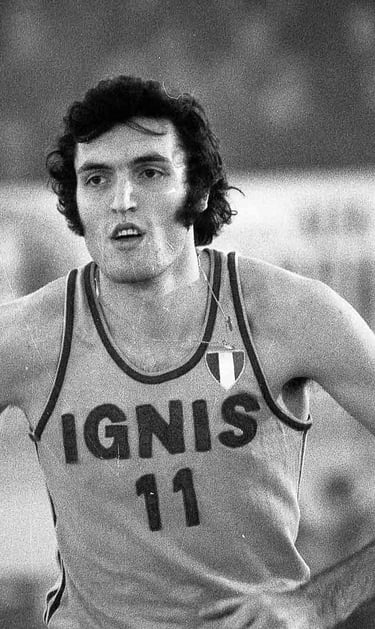

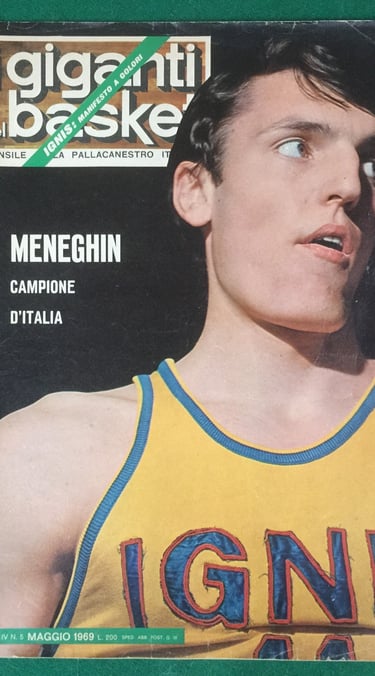

As Cup Winners’ Cup champions, he went to Moscow with the national team for the 1980 Olympics, having circled July 26 on his calendar—the day they would face one of the tournament favorites, the host Soviet Union led by Sergey Belov. Meneghin deployed all his guile and, of course, his legendary elbows in that game, elbows that once an opponent got hit by, would leave behind some very nice bruises at best. He fought epic battles under the basket with Tkachenko, Belostenny, and Myshkin. Coach Gamba assigned Sacchetti to chase Belov, tiring him out. And somehow, the “Azzurri” pulled off a huge upset, knocking the hosts out of the final. Yugoslavia proved unbeatable again, but the silver medal was a triumph for Italy, who reached the second step of the podium largely thanks to “Super Dino,” who was rightfully awarded his first "Mr. Europa" title. Now officially the best basketball player in Europe, he returned home unaware that the coming season would be his last wearing Varese’s No. 11 jersey. Returning from EuroBasket in Czechoslovakia, he faced a new reality: the club had entered a spiral of financial troubles, and the chosen solution to escape this crisis was to sell the team’s flag-bearer.


The highest bidders were all rivals, quick to seize the unexpected opportunity, with Venezia and Olimpia Milano's offers standing out - both ultimately approved by Meneghin himself. Personal reasons and a better financial proposal from Milano convinced Dino not to leave Lombardy. Whatever reservations he had were overcome after a meeting with coach Dan Peterson. Meneghin, already 31, was thinking of playing just two or three more years and then retiring with honours. So he was taken aback when the American coach laid out a long-term plan with him at the center, saying:
“Dino, your goal should be the ’84 Olympics and beyond.”
His arrival in Milan was met with skepticism from fans who saw the old “enemy” don the legendary “scarpette rosse.” Things even turned ironic when Meneghin got injured in his first month, and the demanding Milanese crowd nicknamed him “Doctor Gibaud” (an Italian orthopedic products brand). But Dino, a seasoned veteran, wasn’t discouraged. He started building a relationship with the fans, eventually earning their respect and admiration. The trophies that started coming back to Milan played a major role in this shift, as Meneghin, addicted to winning, brought a champion’s spirit to a team that had previously suffered relegation. The league title came in his very first year, marking the beginning of a new golden era for Olimpia. In 1983, Dino was left empty-handed at the club level when Cantù "wounded" him in a dramatic all-Italian final in Grenoble, decided by Brewer’s block on Gallinari.
But he made history again with the national team at EuroBasket in France. Led by Meneghin both athletically and in grit, Italy survived the “Battle of Limoges” and the "Squadra Azzurra" became the first team since 1957 to win gold, ending the dominance of the Soviets and Yugoslavs, and they did so by going unbeaten. Following this triumph, their leader added a second "Mr. Europa" title to his collection. Fulfilling Peterson’s “prophecy,” he would bid farewell to the national team the following summer at the Los Angeles Olympics, after 15 years and 2,847 points (a scoring record at the time).
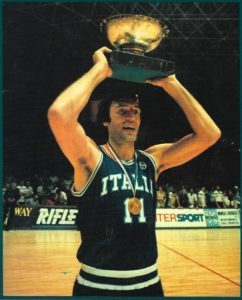
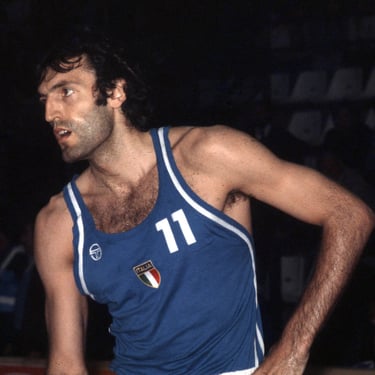
Now he could fully devote himself to Olimpia, further enriching his trophy cabinet. In 1985, he celebrated another league title and also won the Korać Cup -a missing piece in his collection-even though fate had paired him against his beloved Varese in the final. It was time for Olimpia to reclaim the “Holy Grail”of European basketball, the European Champions Cup, which they had been the first Italian team to win. While they failed in 1986 -Cibona and Real Madrid proven to be insurmountable obstacles- they succeeded in 1987, though it required fire and steel to get there.
The 31-point defeat to Aris in Thessaloniki on October 30, 1986, shocked the entire basketball world. But at the same time, it triggered a fierce response from the Tracer stars. A week later, in one of the greatest basketball comebacks in history, the battle-hardened Italians, fuelled by 9,000 rabid fans in Milan, dismantled Aris, flipping the tie with a 34-point victory. It became known as the “Miracle of Palatrussardi.”
Having overcome such a hurdle, nothing else seemed too daunting, not even Maccabi Tel Aviv in the Lausanne final on April 2, 1987, where even the last of the sceptics bowed to "Super Dino’s" heart and soul. Three minutes before the end, the 37-year-old Meneghin felt a severe cramp in his left leg. He limped on and, with 28 seconds left, was called upon to jump for a crucial tip-off despite a new cramp in the same leg. With the score at 71–69 for Tracer, grimacing in pain and facing Magee, Dino's hand rose higher and tapped the ball to Ken Barlow. He missed the easy layup after McAdoo’s pass, but it didn’t matter - Maccabi couldn’t tie or win in the little time left. Eleven years after his last Champions Cup with Varese, Dino wore the European crown once more and he wouldn’t take it off in April 1988 either, in Ghent. The "old warriors" of Tracer, with all their experience, outlasted an enthusiastic but inexperienced Aris in the Final Four semifinal, then beat Maccabi again in the final. Dubbed the "24th NBA team," the Italians silenced critics who called them outdated, proving that you should never underestimate reigning champions. The winning DNA that forged this team was unbreakable. At 38, Meneghin could have stepped off the train, having won everything on his long journey. But his heart was still in it. His weary legs still held, and in 1989 he won another league title with Olimpia.
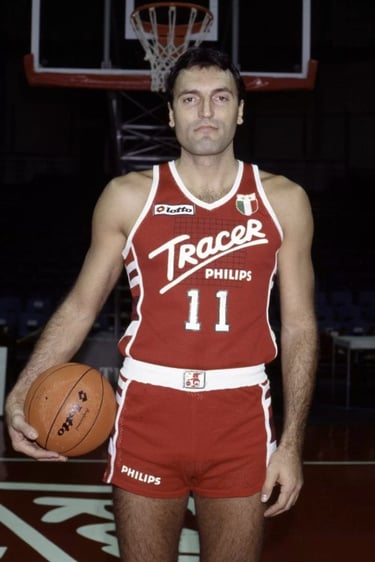
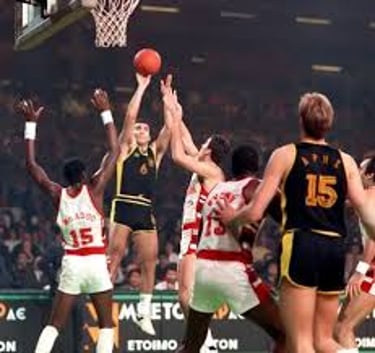
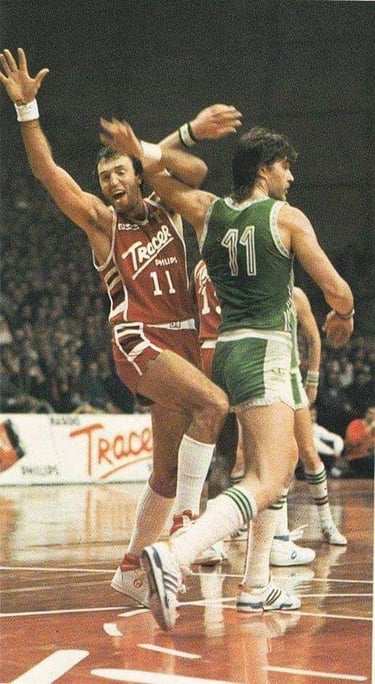
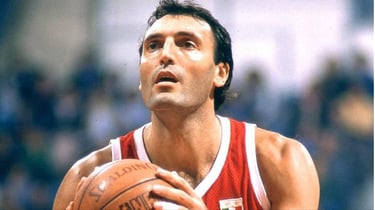




Entering the 1990s, he joined the third team of his career, Stefanel Trieste under Bogdan Tanjević. Playing alongside young teammates who could’ve been his sons agewise, in the likes of Fučka, De Pol, and Bodiroga, Dino took on the mentor role. When he spoke in the locker room, everyone went silent. In Trieste, Meneghin lived the most unforgettable moment of his basketball life, greater than any trophy. On November 15, 1990, at the Palazzo dello Sport, the name Meneghin appeared on two jerseys. One was Dino’s, with the familiar number 11. The other belonged to his 16-year-old son, Andrea, wearing the Varese shirt. In that family showdown, the father emerged victorious, maybe even throwing an elbow at his heir during the game.
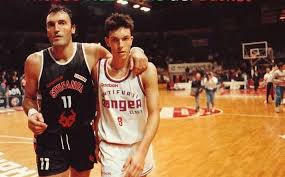

The curtain finally fell for Dino in 1994, in Milan with Olimpia, at the age of 44. The greatest Italian basketball player of all time, and one of Europe’s finest - not the most naturally gifted, but still up there with the best of them. Dino became who we know because he combined cunning with passion, strength with leadership. His elbows marked hundreds of opponents but that was just one way to survive the minefields of the paint.
And he clearly succeeded. The old dusty shoes he carried in his hands would be proud of what the "Totem of European basketball" achieved...
